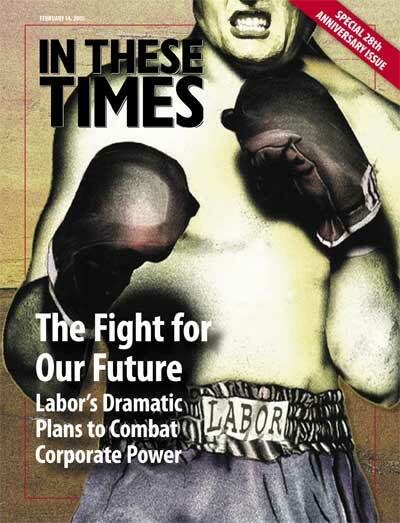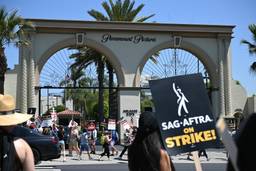Organized labor is the oldest, largest and most successful social movement in the United States. Organized labor has been the wave that lifted all boats, leading the way to retirement with dignity, 40-hour workweeks, two-day weekends, extra pay for overtime and access to quality healthcare for working people. Today, organized labor is still the best-funded and organized progressive force in the country. Its agenda serves broad social interests — guaranteeing workers’ rights to organize and influence workplace conditions, defending Social Security, promoting a living wage for all working people and creating a universal system of quality healthcare.
Organized labor is also in decline. Once representing one out of every three workers, it now enrolls about 13 percent of all workers. It operates in a hostile political environment, unable to match the influence that corporations exert on federal and state governments. It increasingly is confined to representing public employees and workers in a few shrinking industrial sectors. It is plagued by corruption and anti-democratic practices. And, purged of its social-movement emphasis since the McCarthy era, it primarily practices a kind of member-service unionism at the expense of a broader worker agenda.
This constellation of strengths and weaknesses fuels the debate within and outside of the AFL-CIO that Christopher Hayes outlines on page 14. As Hayes writes, a handful of larger unions, including the Service Employees International Union (SEIU) and UNITE/HERE (a merged union representing needletrade workers and hotel and restaurant employees), have challenged the AFL-CIO to reorganize. Their proposal has stimulated the most engaged discussion of labor’s future in a generation. But the controversy has not sparked an interest in all progressive circles.
I asked a leader of United for Peace and Justice, a coalition formed to oppose the war in Iraq, if their organization had any interest in the outcome of the debate within organized labor. “No,” she said. “Labor represents less than 13 percent of workers. Their internal debates don’t affect us.”
But they do. For 28 years, In These Times has been reporting on the political efforts of peace groups, environmentalists, feminists, civil rights organizations and others. There have been victories during that time, but what stands out in many of these struggles is that groups too often fight alone, fight locally, and fight without a connection to an energized and inclusive movement.
The proportion of the workforce represented by organized labor has shrunk, but unions still represent 16 million public- and private-sector workers, many of whom engage in progressive political action. The labor movement’s leadership is changing and now includes women, people of color and low-income workers in numbers that other movements can’t match.
Unions remain a force to be reckoned with. If the AFL-CIO’s debate about its future direction leads to a revival of organized labor, that would be a first step in reviving a progresssive movement in the United States. A reinvigorated labor movement, with inclusive leadership and an expanding membership base, would boost the efforts of progressives everywhere. It could help us move beyond the current situation of isolated struggles — small groups of activists and coalitions defending past victories and scratching for small changes.
A historical fact: When unions have been strong, other social movements make gains too. It is time for all progressives, and Democrats, to recognize this.
Corporate America and the Republican Party have forged a partnership that currently decrees the contours of our economic and cultural life. If progressives ever want to counter this corporate hegemony, they must learn from the past and embrace the strength and potential of the union movement. For their part, labor leaders must refocus on their original mission — to build solidarity among all workers, to play a leading role in defining the conditions of work and to organize the unorganized.
We have no choice but to care about the future of labor. Its future is our own.

I hope you found this article important. Before you leave, I want to ask you to consider supporting our work with a donation. In These Times needs readers like you to help sustain our mission. We don’t depend on—or want—corporate advertising or deep-pocketed billionaires to fund our journalism. We’re supported by you, the reader, so we can focus on covering the issues that matter most to the progressive movement without fear or compromise.
Our work isn’t hidden behind a paywall because of people like you who support our journalism. We want to keep it that way. If you value the work we do and the movements we cover, please consider donating to In These Times.





